Company: TV4 Media (Owned by Telia)
My role: Design Lead
Focus: Supporting the design team working on our streaming services C More and Telia Play (Apps, Mobile, Web, Apple TV & Android TV) + our linear TV service for Telia. Responsible for team culture, user-centered way of working & the design maturity.
Also responsible for our player experience across all platforms and brands.
Facilitating a remote workshop
I joined TV4 Media to be a part of their transformation journey of merging two of the biggest streaming services in the Nordics - C More and Telia Play into one customer offering. My main responsibility was to build up our ways of working, both internally within the design team to keep designers inspired and dedicated and externally, to raise the organizations design maturity.
I split my time between my lead and strategic responsibilities and working in our player product team - which is responsible for our viewing experience for all platforms. This is a setup I really like as I got to combine the three things I love the most; people, design, and watching TV.
Examples of my leadership responsibilities and implementations
My goal for our design team was simple. I want people to have fun and feel safe at work. I’m a firm believer that happy people create better experiences and therefore bring a larger value to the company. When I joined the organization I asked my team what problems they had and what challenges they met. Designers wanted to have a better collaborative process across all competencies in the company and a better way to champion user-centered design within the product cycle.
With this in mind, I’ve put together and presented a common product development process for our product organization. In this newly implemented process, I’ve set up a more accessible way to test and iterate on our designs earlier and really pushed for design and designers to be a part of the strategy of our products earlier. When I joined the company, there was no clear KPI tracking for user experience or for design, and with this new process, we made sure that not only designers have a larger stake in the product strategy, but also to better measure success.
Since joining in the middle of a pandemic I also saw a need to make sure that new hires feel welcomed and understand our processes - and have the ability to improve them. I created, with the help of the team, a digital onboarding process where collected documentation of WoW, good-to-know and acronyms were found, making new designers quicker to onboard.
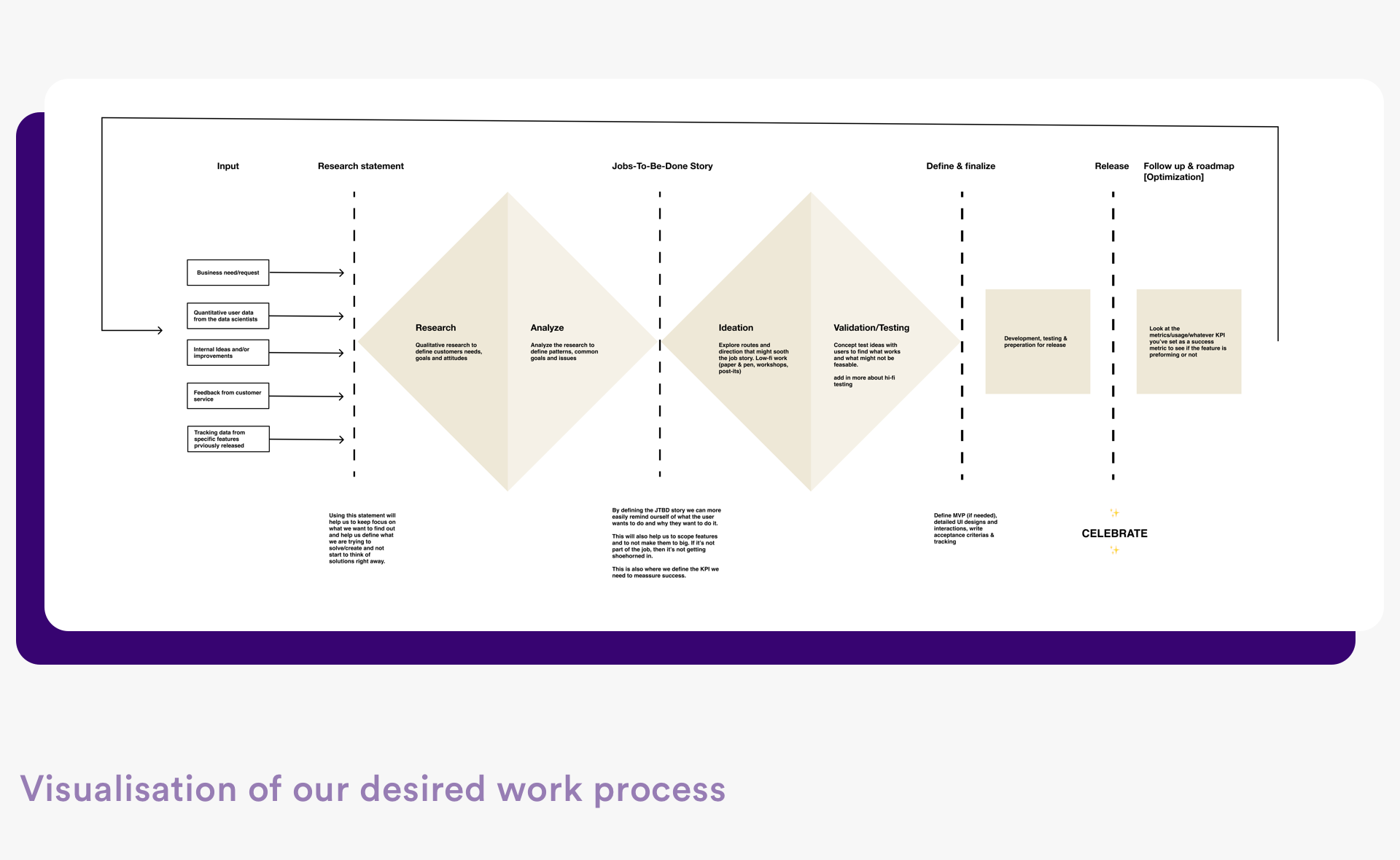

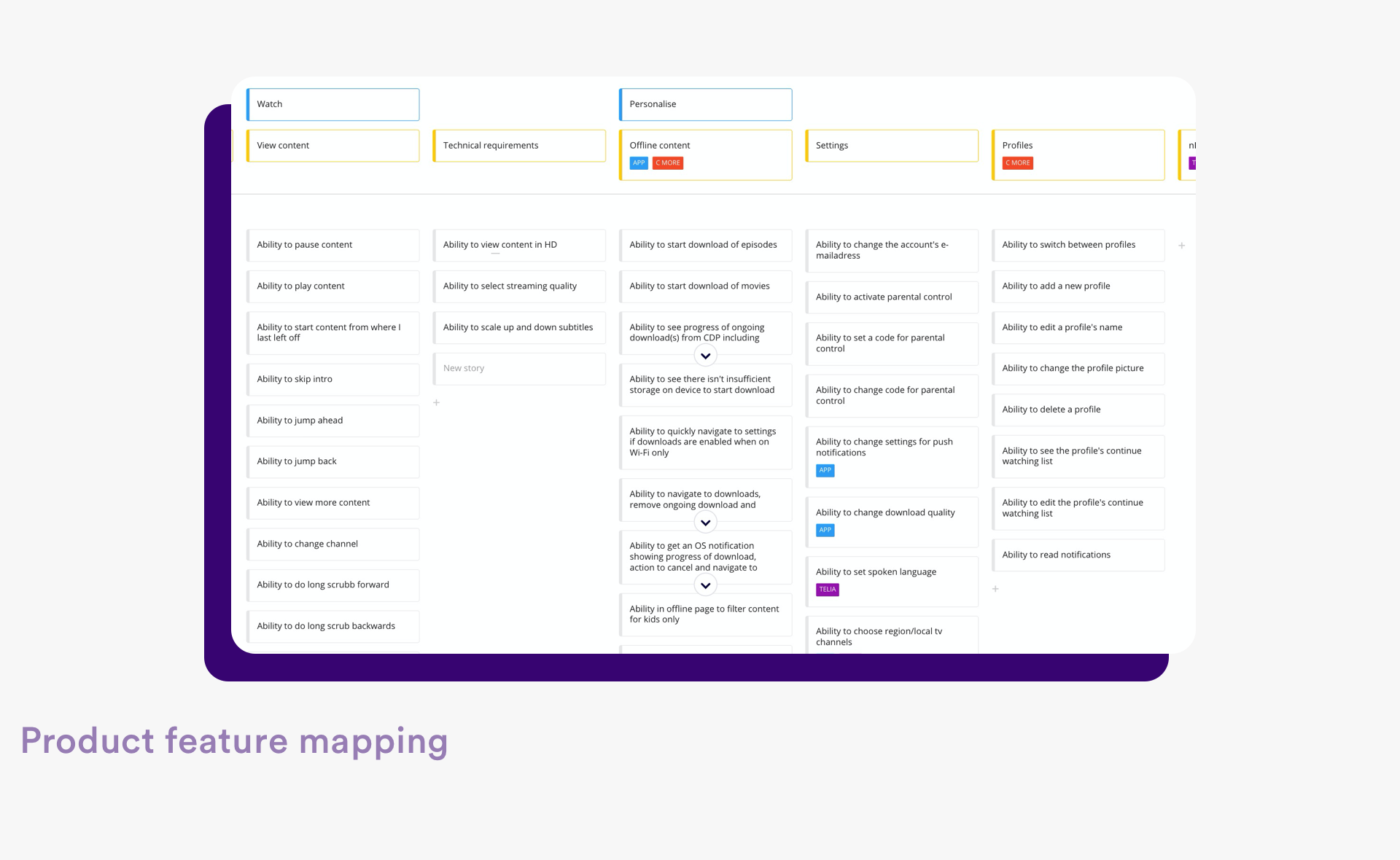
I was also part of our global design ops team with all the country design leads, facilitating global collaborations and working on ways to empower design and designers across the organisation.
Design system
In my goal to make the design team work more holistic across our user journey, we spent a lot of time creating and iterating our design system. We knew we wanted to make it understandable, not only to new designers, but developers, product owners, and content strategists. One of our key metrics for our measurement of success is to have as many people in our company exploring and understanding the full customer experience and that the creation of new initiatives does not happen in silos. We tried and failed but finally landed on a good strategy on how to set up our files to make the documentation and variants easy to work with. We also created re-occurring work sessions and Slack channels to share feedback and news about the system and how it can be improved. Most of my work within the player product team was to move our player into the design system and used it as an MVP to test the design system and our GitHub repo.
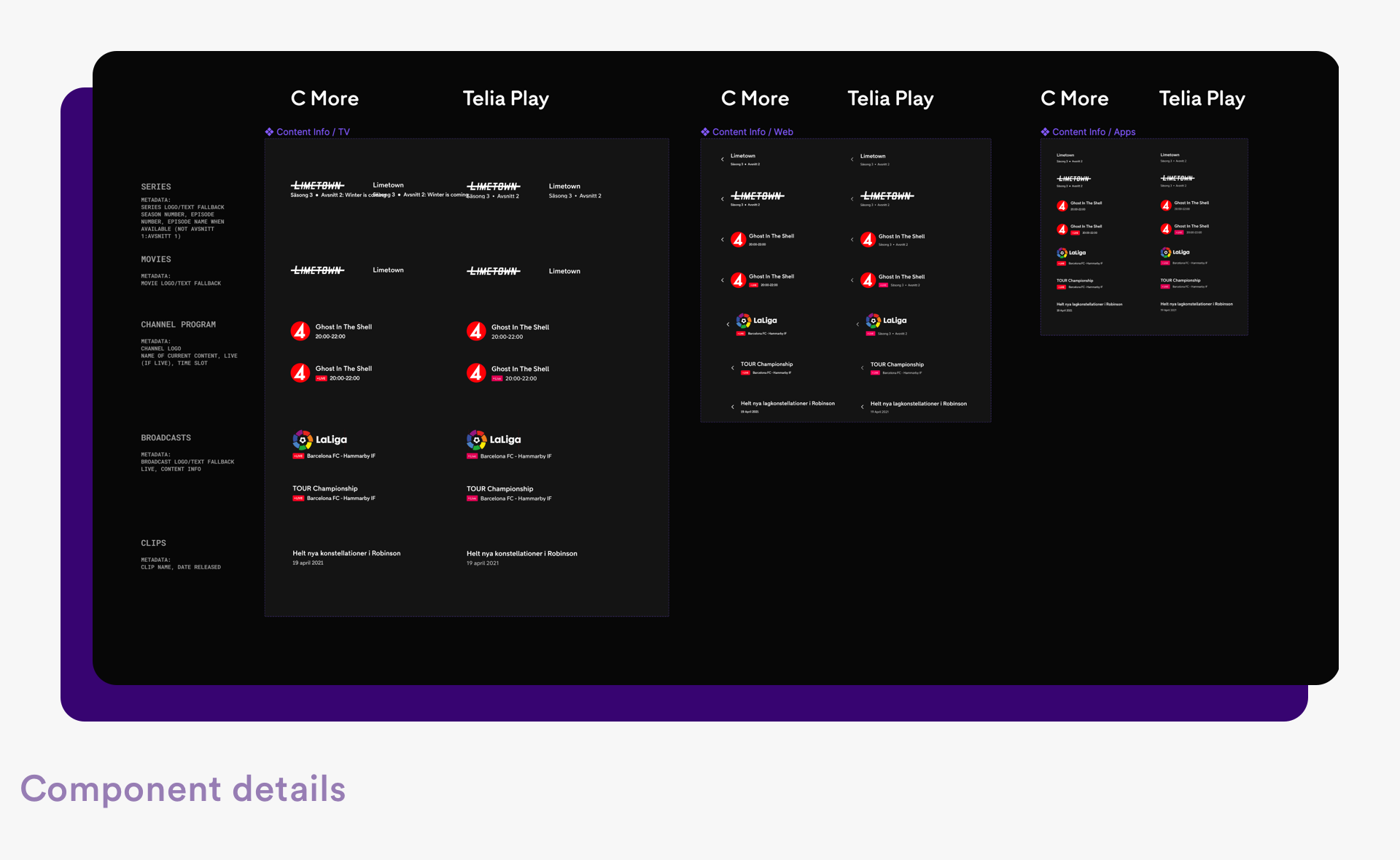

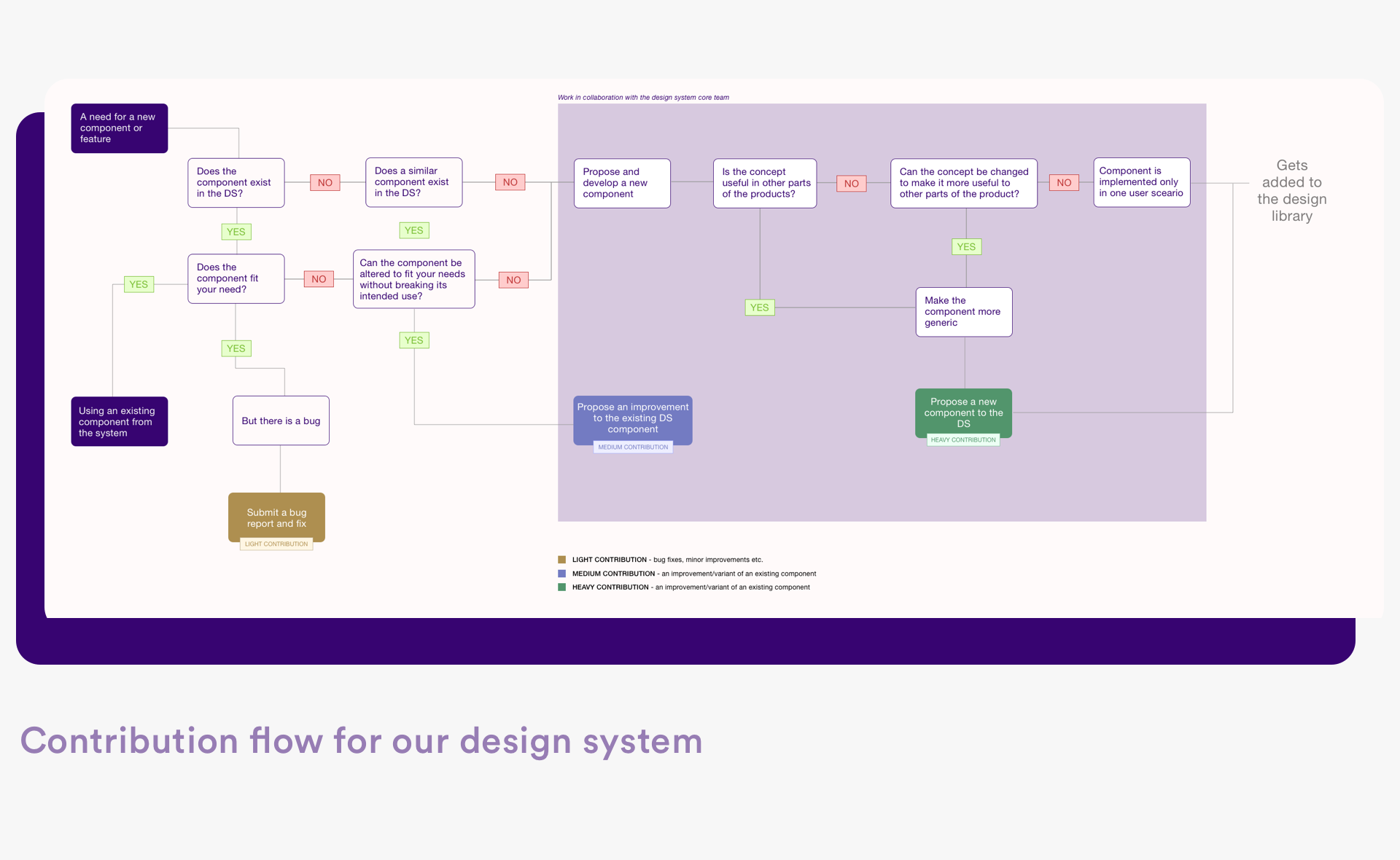
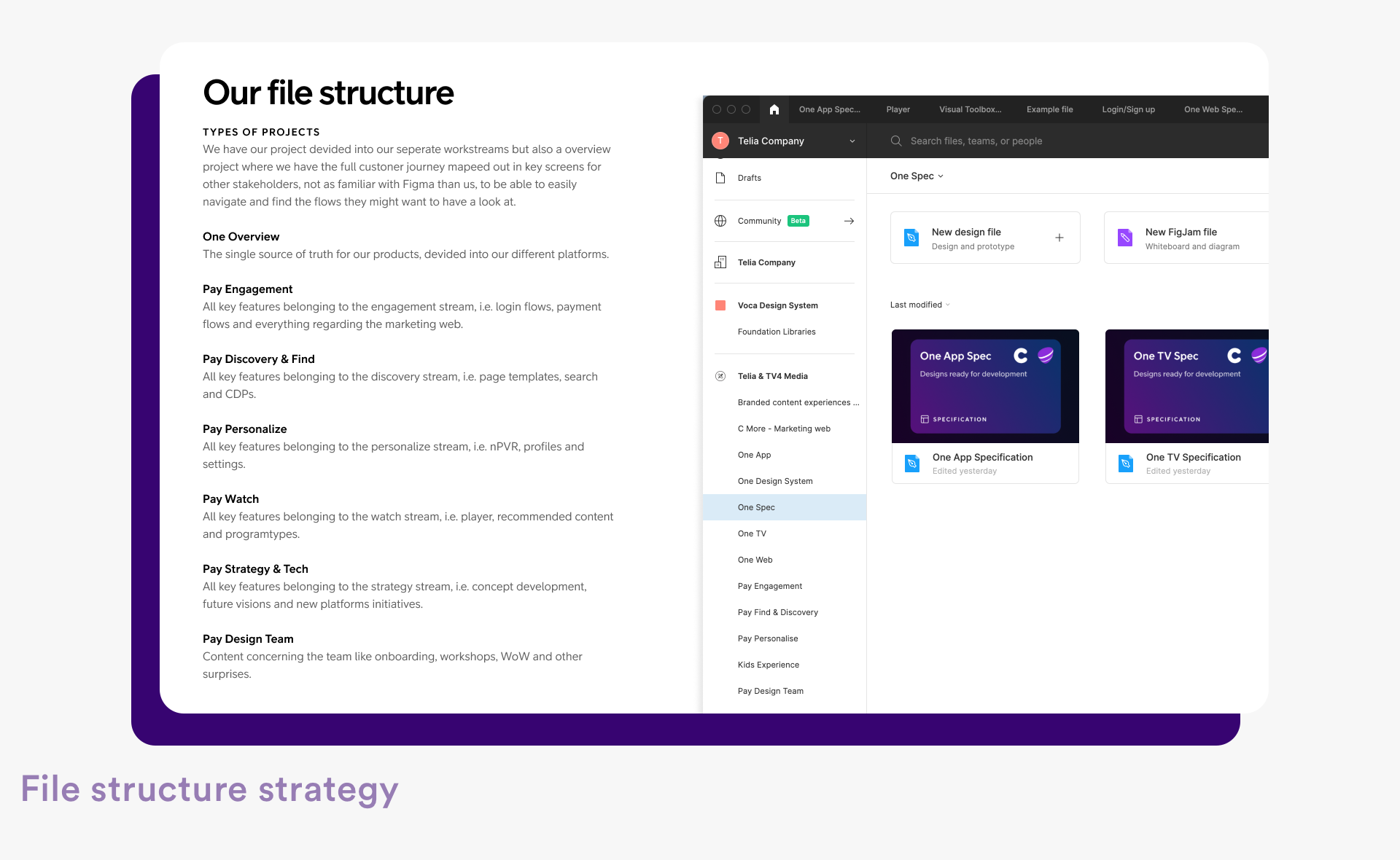
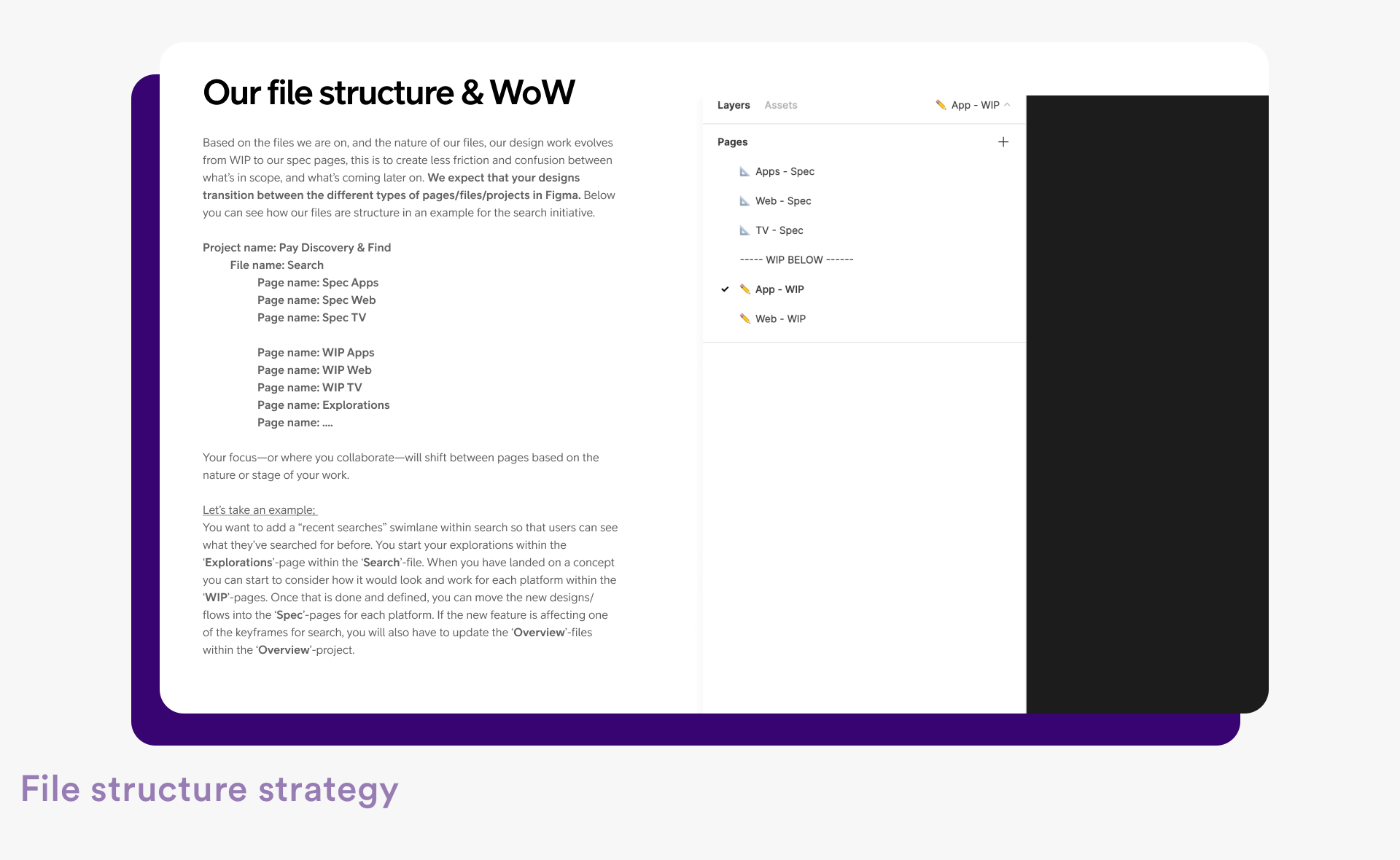
I’ve loved working with the player experience as it is the heart of any viewer’s experience. Understanding the restraints that come from providing as stable stream as possible, with the 100+ different scenarios a user is consuming the content. Are they on the bus? Do they have wifi? are they watching a live stream or a movie? Are they alone or with friends? Do they do other things at the same time or are fully invested? This made me not just grow as a designer but also I also learned a lot about technical limitations and backend solutions needed to provide the best user experience.
Let’s look at another project I led during my time at TV4/Telia
In our latest NPS survey, we saw that we had a very low score on personalization, a lot of users feel like their experience is not theirs, it’s just generic. To solve this we’ve been working together with stakeholders from around the company; data analysts, tech leads, content rights responsible, and marketing people to really make sure that our strategies are aligned and that we do not miss important data points that could help us improve our content strategy but also how we personalize the display of content to our users.
We started with crafting the question statement that we wanted to find answers to. What do our customers say about us? What makes them choose us over others OR what is it that makes them choose other services over ours? This we did through a competitor analysis, interviews with our customer service agents & a survey sent out to 3000 of our users throughout the Nordics. We landed on this:
What I found interesting with this project has been that it’s not just a new way to show users our content in a more relevant way, but also a way to collect enough data to have it affect our content strategy and what content we will buy/create for the upcoming quarters.
After collecting some understanding of technical limitations, competitors, and user feedback we sat down and started to work on a few alternative concepts. What kind of data do we need to track? In what ways can we recommend our users the relevant content? We ended up with 3 different prototypes that we ran qualitative testing on.
We saw some overarching themes through the testing:
A sense of control
Users want to feel in control. We need to provide them with a personalized selection of options, but THEY need to be in control of the decision. In almost every interview we heard worries about “missing out” or getting stuck in a filter bubble and miss content they might like.
Different content demands different personalization
We saw a change of needs between a very clear segmentation of our users; linear tv watchers, sports geeks, and movies/series bingers. This means that our content needs to co-exist, but be recommended and viewed in different ways. For example; when watching a soccer game, it’s more important to know how much time has passed vs. when watching a program on a linear channel, it’s more important to have the relevant time of day as an indicator of progress.
It’s important to not only track what they do watch, but also what they choose to not watch
Just because a user watches an action movie on a Friday night might not mean that they love action movies. Through the interviews, we saw a request to be able to “clean out” their account. If they stop a movie 10 minutes in, it should be an indication that it’s not for them.



Examples of modules and functionality to better highlight and distribute our content tested in our prototypes.
This landed in us mapping how we treat and connect the metadata that we tag our content with (some examples are; actors, categories, country, year of release, time era, and language) to improve and grow our recommendation engine but also to expand the way we connect at recommending content with more arbitrary descriptions such as ‘mountain settings’, ‘90s vibe’ and ‘summer’.
On the more customer-facing side, we continuously release updated versions of the concepts we tested, like the way of presenting content based on specific moods and a playful quiz to help people to find what they want to watch.
These are just some of the projects and initiatives I’ve led throughout the company and if you want to learn more or get my latest binge-series please, reach out! I can talk about TV for hours 📺🍿



